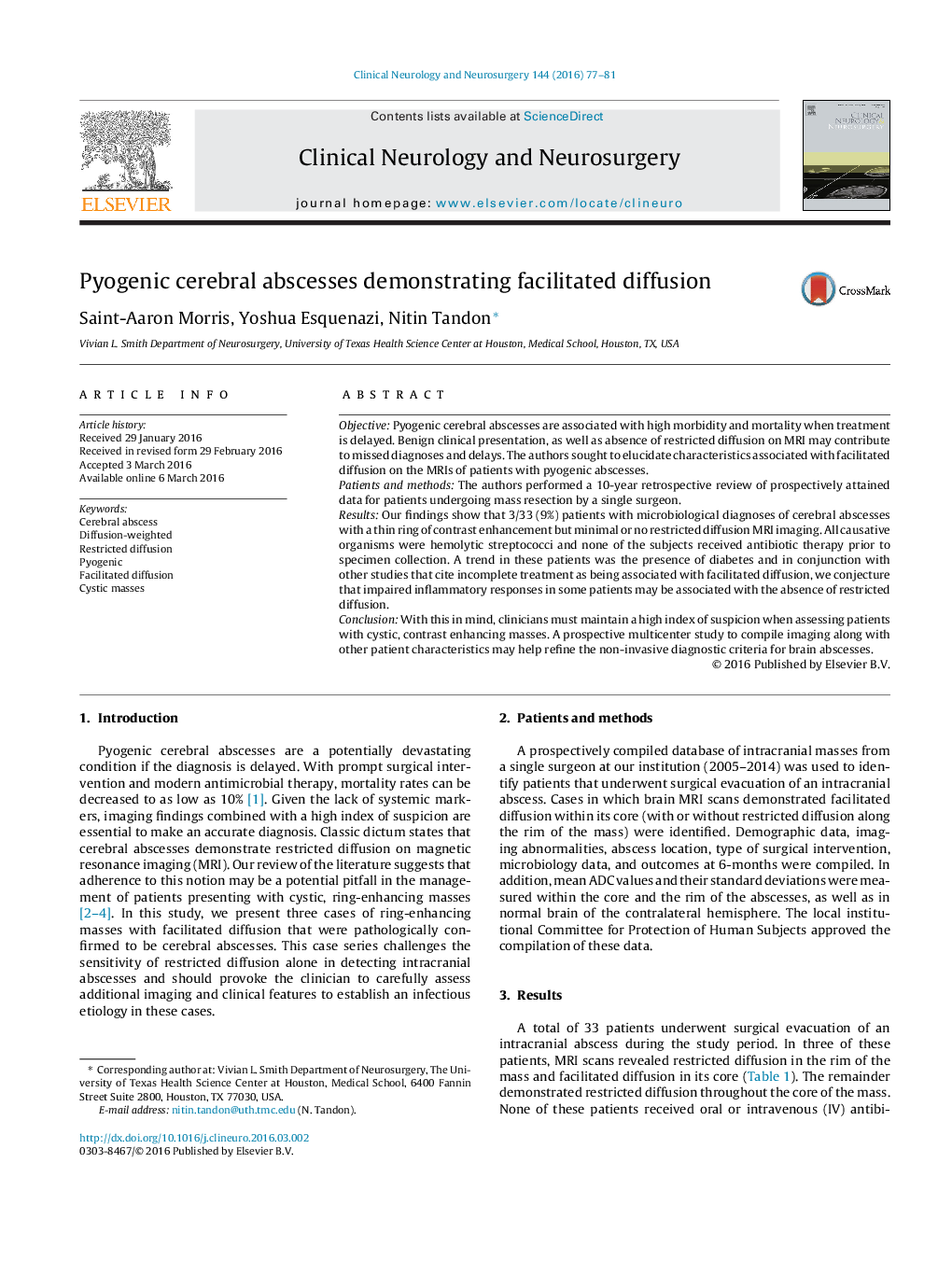| Article ID | Journal | Published Year | Pages | File Type |
|---|---|---|---|---|
| 3039493 | Clinical Neurology and Neurosurgery | 2016 | 5 Pages |
•We show the importance of suspecting abscesses in all ring enhancing cystic masses.•We showed a commonality of restriction along the periphery of these masses.•We suggest radiographic and clinical traits that may correlate to our observation.•We provide an overview of the literature as it relates to such lesions.
ObjectivePyogenic cerebral abscesses are associated with high morbidity and mortality when treatment is delayed. Benign clinical presentation, as well as absence of restricted diffusion on MRI may contribute to missed diagnoses and delays. The authors sought to elucidate characteristics associated with facilitated diffusion on the MRIs of patients with pyogenic abscesses.Patients and methodsThe authors performed a 10-year retrospective review of prospectively attained data for patients undergoing mass resection by a single surgeon.ResultsOur findings show that 3/33 (9%) patients with microbiological diagnoses of cerebral abscesses with a thin ring of contrast enhancement but minimal or no restricted diffusion MRI imaging. All causative organisms were hemolytic streptococci and none of the subjects received antibiotic therapy prior to specimen collection. A trend in these patients was the presence of diabetes and in conjunction with other studies that cite incomplete treatment as being associated with facilitated diffusion, we conjecture that impaired inflammatory responses in some patients may be associated with the absence of restricted diffusion.ConclusionWith this in mind, clinicians must maintain a high index of suspicion when assessing patients with cystic, contrast enhancing masses. A prospective multicenter study to compile imaging along with other patient characteristics may help refine the non-invasive diagnostic criteria for brain abscesses.
